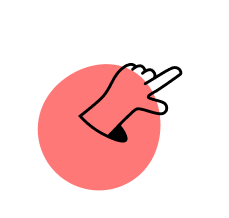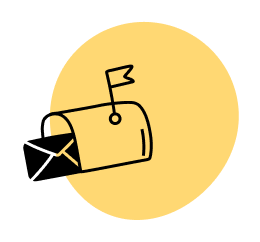In 2010, while documenting the creation of a niche site publicly here on the blog, I published a massive article called THE Backlinking Strategy that Works, and it did work – extremely well. That post helped thousands of others get their sites ranked on the first page of Google, and the article itself now has over 2,100 blog comments.
Of course, a lot has changed since 2010.
A lot.
Although some of the techniques from that original article still work, the environment of SEO, backlinking, and what it takes to reach the top of Google is much different.
I’ve since started a new niche site to discover techniques that work today, completely focusing on longer-term strategies based on relationship-building and delivering unique content (which has been working—see updates here), but somebody I recently discovered has me really excited about exactly what’s working in today’s world of SEO and backlinking.
Everyone, I’d like to introduce you to Brian Dean from Backlinko.com. The content on his blog is top-notch and has already helped me in several ways, and I asked him to create the new, latest and greatest Backlinking Strategy that Works as a guest post for all of you, and he happily agreed.
A couple of months later, here it is, and it’s amazing! This post isn’t just what to do, and not only how to do it, but why. I’ll be putting many of these strategies to the test myself, and I hope you will too.
For those of you looking to get to the top of the search engines…here’s Brian…
I first stumbled across Pat’s amazing guide, THE Backlinking Strategy That Works, in late 2010.
It was unlike any SEO article I’d ever read.
Actionable.
Hype-free.
And most important of all, darn effective.
But that was 2010…
I probably don’t need to tell you that A LOT has changed in the SEO world since 2010. [Editor’s Note: Because so much has changed in SEO, we have removed the link to that older post. We don’t want you accidentally spending time on out-of-date strategies.]
In fact, Pat recently added a disclaimer at the beginning of the article to let people know that this strategy isn’t quite as effective as it once was:
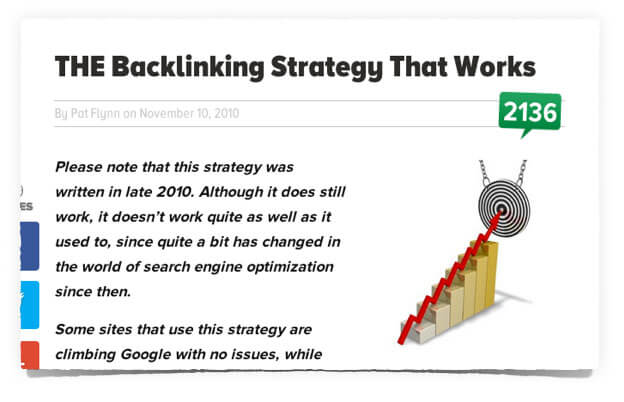
At this point, you may be wondering:
“Well, what IS working now?”
Well you’re in luck because that’s exactly what I’m going to show you today.
Like Pat’s original post, I’m going to break everything down for you in ridiculously detailed, step-by-step instructions.
Let’s do this…
First, What Still Works From The Original “THE Backlinking Strategy That Works”?
Here’s the deal:
You already know that the highly-tactical techniques from the original post don’t pack the same “umph” that they used to.
But that doesn’t mean you should toss the overarching strategy from the original “THE Backlinking Strategy That Works” out the window.
Before we get into the step-by-step guide, I want to quickly go over what techniques and concepts in that post still apply today…and what’s changed.
What Still Applies
SEO Is Still All About Links
Despite all the hooplah and hype over social signals and content, ranking in Google is still all about backlinks.
In fact, Google’s Matt Cutts recently confirmed that they don’t use social signals — like tweets, Facebook Likes or Pinterest pins — to rank sites. The fact that Pat had (and still has) a ton of success from a link-focused SEO approach should come as no surprise.
In fact, Moz’s most recent “Search Engine Ranking Factors” study found that 18 of the 19 top ranking signals were backlink-related:
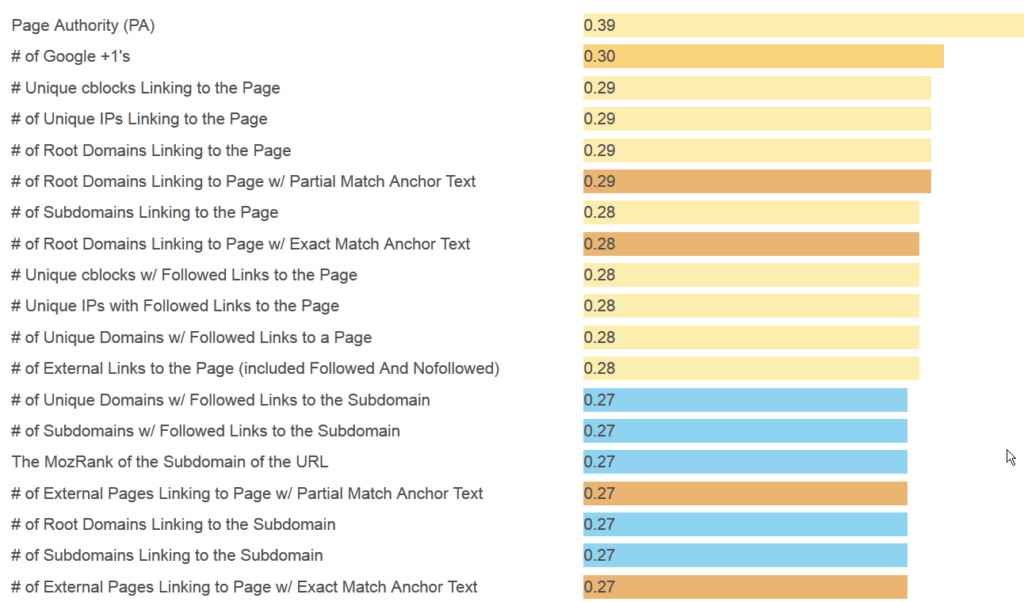
Bottom line: Today’s Google rankings are still heavily-reliant on backlinks. That hasn’t changed. What HAS changed is the type of links you need to build (more on that later).
Focus on Building Links From Authority Sites
In Pat’s original post, he emphasized the importance of links from authority sites, like Squidoo, Hubpages and Ezine Articles.
Today, links from those particular sites won’t do you much good (you’ll see why in a minute). But a single link from an authority site still has a much greater impact than thousands of low-quality links.
Bottom line: Backlinking is still a quality over quantity game.
Anchor Text Diversity
Back in the day, if you wanted to rank for the keyword “green coffee mugs”, you’d want 100% of your anchor text to be “green coffee mugs”.
Not anymore. Today, over-optimized anchor text will get your site slapped by Google’s Penguin update.
In fact, MicrositeMasters.com found that sites with natural-looking anchor text largely survived Google’s original Penguin update…

…and sites with over-optimized anchor text got hit:

As Pat says in the original post: “The text of the links that point back to your site should only be your primary keyword about 20-25% of the time…Vary your anchor text using secondary and tertiary keywords.”
That advice is sound. I would just add that brand and URL anchor text should be part of your anchor text strategy.
Here’s what I mean:
If you look at any legitimately popular site’s anchor text profile, you’ll notice two things:
1. VERY little keyword-rich anchor text.
2. A LOT of brand name anchor text.
For example, here are the most commonly used anchor text phrases pointing to SmartPassiveIncome.com:

As you can see, SPI rocks a lot of brand anchors, like:
- Smart Passive Income
- Pat Flynn
- The Smart Passive Income Blog
- smartpassiveincome
And URL anchors like:
- https://www.smartpassiveincome.com
- www.smartpassiveincome.com
- https://www.smartpassiveincome.com/
That’s EXACTLY the type of anchor text diversity you want to have.
Why is this important?
First, it just looks natural.
Second, it shows Google that you’re a real brand.
I probably don’t need to tell you that Google has a crush on brands. Giants like Amazon and Wikipedia dominate the first page for nearly every high-volume keyword.
Here’s the good news:
You can tell Google: “hey, I’m a real brand” with lots of brand-name anchor text.
For example, Pat’s own Foodtruckr.com has mostly brand name anchors, like “foodtruckr” and “foodtruckr.com”.
And because of that, Google shows sitelinks when you search for foodtruckr.

Sitelinks are a sign from Google that they regard your site as a real brand.
Bottom line: Diversify your anchor text like a real brand. Focus on brand name and URL anchors.
What’s Changed
The Wrong Links CAN Hurt You
Before Google’s Penguin update, you could get away with murder.
10,000 blog comments?
Sounds good.
Submit an article to 5,000 article directories?
Sure, why not.
Order a link blast from Fiverr?
What a bargain!
Needless to say, those days are LONG gone.
I’m not going to lie to you:
That type of stuff can work.
The thing is, there are two HUGE problems with the spammy link building approach:
- As Pat points out in the original post, results from this approach are inconsistent. It’s kind of like playing the lottery. Sometimes you win, sometimes you don’t.
- Even if you do get lucky, your results don’t last. Most black hat SEOs I know talk about ranking for “weeks”…not “months”.
Bottom line: Be super-careful about the links that you build. In my experience, white hat link building is a safer long-term approach.
Relevance Is the New PR
A few years back SEO blogger James Norquay ran into an ex-Google employee that used to work in the uber-secretive Search Quality department.
James pulled him aside and grilled him about Google’s super-secret algorithm.
One interesting quote popped out of the ex-Googler’s mouth:
“…getting a link from a high PR page used to always be valuable, today it’s more the relevance of the site’s theme in regards to yours, relevance is the new PR.”
I’ve seen this firsthand:
A relevant link has a lot more ranking power than a link from an irrelevant site (even if they both have the same PageRank).
As you might imagine SPI’s link profile is made up of sites in closely-related niches.

As you can see, Pat’s links tend to come from sites about Podcasting, social media, SEO and making money online.
Bottom line: Focus on getting links from relevant sites. It’s OK to have a few oddballs in there, but most of your links should be from related sites.
Zero-In on Editorial Links
If you’re serious about link building today, you need to set your crosshairs on ONE type of link:
Editorial links.
These are the exactly types of links that Google likes to see.
What are editorial links, you ask?
They’re links added by another person based on merit.
For example, here’s an editorial link I recently received:

And here’s an editorial link pointing to SPI:
![SPI Editorial Link; a screenshot of a paragraph from a post that has hyperlinks to SPI and to the podcasting tutorial. It reads, "If you want to start a podcast you could do no worse that [sic] to go to the podcasting expert, Pat Flynn at SmartPassiveIncome.com. Here's Pat's Complete Step-by-Step Podcasting Tutorial. It contains 6 videos containing over an hours' worth of viewing.](https://www.smartpassiveincome.com/wp-content/uploads/2023/11/image63.png)
In other words, editorial links don’t include:
- Article directories
- Most web directories
- Blog comments
- Web 2.0 links
- Blog networks
As I said earlier, these links can work…but they’re full of problems and headaches.
Now that you know what to do, it’s time to show you how to do it.
Overview of the Process
Here’s the 3-step process I’m going to walk you through today:
- Find a proven topic.
- Create ONE awesome resource around that topic.
- Reach out and get your links.
I should warn you:
This system is simple…but it’s not easy.
It takes serious amounts of work, hustle…and a little bit of cash. That’s what it takes to get editorial links today 🙂
If you’re up for it, let’s jump in.
Step #1: Find a Proven Topic for Your “Wow Content”
Before you build a single link, your first job is to publish an AMAZING resource on your site.
Not good.
Not great.
AMAZING.
Anything less simply won’t work.
I like to call mind-blowing content like this “Wow Content”, because (you guessed it), it makes people say “WOW” when they see it.
Note: Simply publishing Wow Content isn’t enough. You’ll still have to get out there and promote it. But when you do, you’ll notice that people will happily link to you (don’t worry, I’ll cover content promotion in step #3).
To give you an idea of the level of content I’m talking about, here are some examples of Wow Content from the real world.
100+ Ways to Conserve Water (WaterUseItWisely.com)

This beautifully designed guide lists 100 super-practical tips to help you save water. No wonder it’s attracted links from over 818 different websites.
How to Start a Podcast – Pat’s Complete Step-By-Step Podcasting Tutorial (SmartPassiveIncome.com)

You’ve probably seen this outstanding guide before. Pat provides literally everything you need to start a podcast, from the “why” to the nitty-gritty “how”. That’s might be the reason that 118 different sites have linked to Pat’s guide (and why it ranks #1 for “how to start a podcast”).

41 Camping Hacks That Are Borderline Genius (BuzzFeed.com)

It’s not easy to get 171 sites to link to a blog post about camping. But that’s what Buzzfeed pulled off in their incredible guide. I don’t even like camping that much and I was riveted by the hacks in this post (did you know you can use Doritos as kindling for a campfire? Crazy).
These examples should give you an idea of where to set the bar.
But first…
How to Easily Generate Ideas for Your First Piece of Wow Content
Before you sit down to write the first word of your Wow Content, you need to tackle one extremely important step: finding a proven topic.
Without a proven topic, your Wow Content may seem to have a ton of potential…
…but could fall flat when introduced to the real world.
But when you have a proven topic in-hand, you KNOW that you’re producing something people want to actually read and (more importantly) share.
BuzzSumo
BuzzSumo is an awesome tool that does something very cool:
Finds content that’s already performed well.
When you find a piece of content in your space that’s “made it” in the real world, it gives you a HUGE clue that it’s something you should model.
For example, let’s use BuzzSumo to find popular content around the topic of gardening.
Just head over to BuzzSumo and enter a broad keyword related to your niche. Let’s try the super broad keyword, “gardening”.

Hit “search” and Buzzsumo will show you popular content based on the number shares on social media networks like Facebook and LinkedIn.
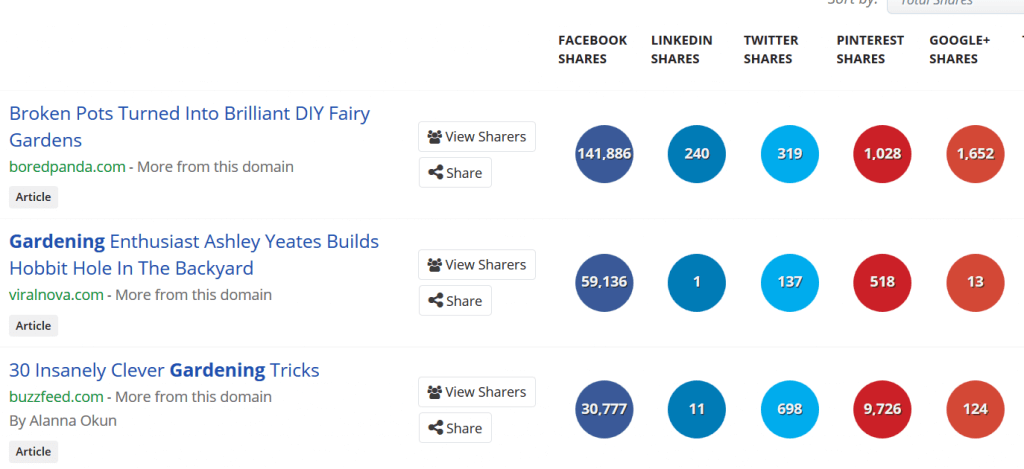
Note: Some of the content you’ll find has a lot of shares because it was published on a massive authority site, like CNN.com or The Huffington Post…not because it’s particularly awesome. You want to keep an eye out for smaller sites that aren’t household names.
In about 12-seconds I was able to find a piece of winning content on a small blog. The post has hauled in an impressive 901 Facebook likes and 21,962 Pinterest Pins (!).
It’s interesting though. This article, and several others found on this list don’t have the “WOW” factor that we’re aiming for.
And that’s a good thing.
Let me tell you why:
When you find a piece of mediocre content that’s crushed it, it means you can easily create something even better.
With this proven idea in hand, you could easily create a vastly improved version of these posts.
Reddit is an untapped treasure trove of proven content topics…but it’s very much dependent on your niche.
If you’re in a niche that appeals to men between the ages of 15-40, (like the consumer electronics or video game niche) Reddit is perfect for you.
Either way, it’s worth a 2-minute search because you’ll sometimes come across a topic idea that you’d NEVER find anywhere else.
First, find a subreddit or two in your niche using the very nifty SearchReddit.com.
Search for a broad keyword that describes your niche. For example, if you ran a niche site about gingerbread houses, you’d want to use a keyword like “cooking”, “baking” or “desserts”.
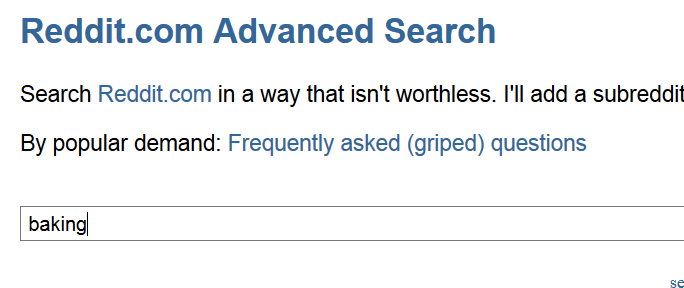
SearchReddit.com will hook you up with a bunch of subreddits that tend to cover that topic.

Click on one that seems like a good fit. I’m going to head to the r/baking subreddit in this example.
By default Reddit will show you the trending topics in that subreddit.
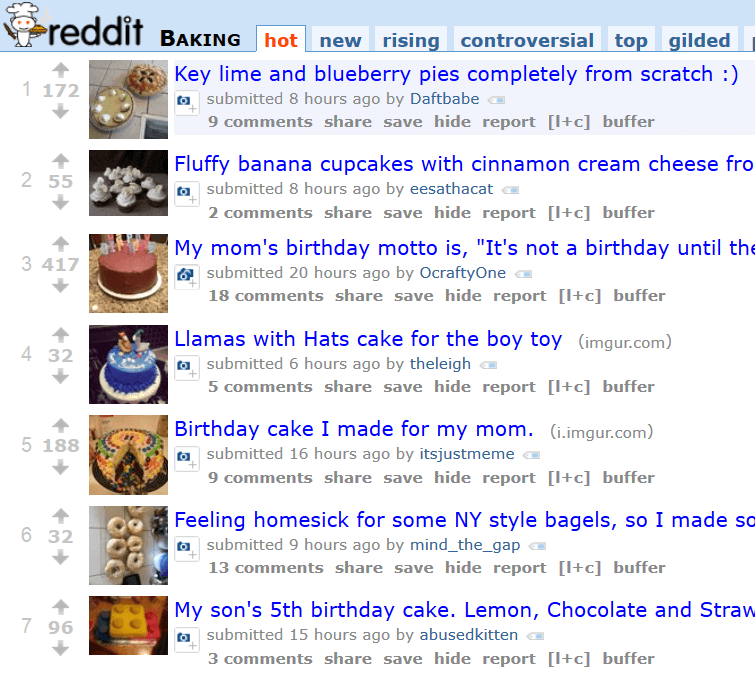
Trending topics are nice, but they’re not always the most useful. You want a topic that’s evergreen. To find that, click on the “top” tab at the top of the subreddit. This will show you that subreddit’s all-time most popular threads.

Bingo!
I found a handful of crazy-interesting topics that I know my target audience of hardcore bakers would love.

The best topic I found was “How cookies look with different ingredients”. With over 1700 upvotes, you KNOW that bakers want to learn more about this topic. Shazaam!
Quora
Quora is a souped up version of Yahoo Answers.
Quora is an amazing topic generator because of its robust upvote system (similar to Reddit). When dozens of people upvote a question, it tells you one very important thing:
People want to learn more about that topic.
Here’s how to mine Quora for awesome content topics:
First, search quora for a keyword that describes your niche. Unlike Reddit, you want to search for more precise keywords that fit your niche like a glove.
If you had a site about gluten free recipes, you’d search for “gluten free”.

Then look for topics that have a lot of upvotes and comments.

In about 27-seconds on quora I found 5 topics that would make awesome Wow Content pieces.
Here are some examples of how you can turn Quora questions into Wow Content titles.
Quora: What is your best recipe for a gluten-free cake?
Wow Content: 75 Mouth-Watering Gluten Free Cake Recipes
Quora: What are some good brands for gluten-free bread and bread products?
Wow Content: I Put 25 Gluten Free Bread Brands to The Test — Here’s What Tastes Like The Real Thing
Quora: What is the scientific consensus on the effect of eating gluten on your health?
Wow Content: Gluten Free Diet: Fad or Nutrition Miracle? The Experts Weigh In
You get the idea 🙂
Forums
I’m shocked at how few online marketers use forums to market their business.
Sure, forums and boards may not be “the next big thing” in marketing.
But they’re one of few places online where you can put your finger directly on the pulse of your target audience.
To find a forum in your niche, use one of these handy search strings:
- “your keyword” + powered by vbulletin
- “your keyword forum”
- “your keyword” + “board”
For example, I did a quick search for “baking forum” and came across a handful of active forums:

Let’s check out cheftalk.com.
Like on Reddit, forums put their newest threads at the top of the page.

That’s not what we want.
Click on “views” or “replies” to find the forum’s all-time most popular threads.

Can you say “gold mine”?
Look at all those awesome, tested topic ideas:

Google’s First Page
Sometimes the best ideas are right in front of your face.
And that’s certainly the case when it comes to Google’s first page.
If a piece of content makes it to the first page of Google, it tells you something important:
That content has generated backlinks.
You can’t be sure whether those links came from targeted outreach or dumb luck. But it doesn’t really matter. The important thing is that you’ve found a topic that people like to link to.
Before you dive in, download the handy dandy Mozbar extension for Google Chrome and Firefox.
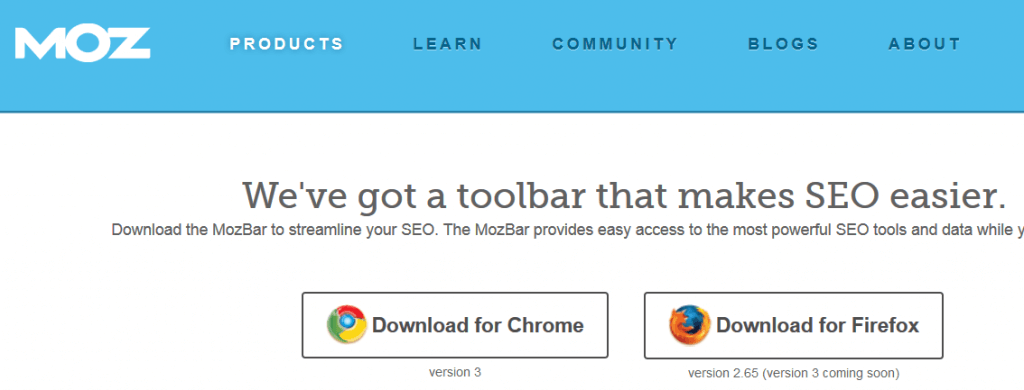
This toolbar will show you SEO metrics, like Page Authority, right on Google’s first page.
Here’s an example using the keyword “blogging tips”:

The next step is to look at each of the top 10 results. Find out what made the content great enough to accumulate links.
For example, let’s look at the 2nd result in Google, from SocialMediaExaminer.com. It’s called “39 Blogging Tips from the Pros”.

That post collected some highly-actionable blogging tips from 39 experts.

This tells you that people want to hear blogging tips from experienced bloggers. Write that down.
The 3rd result in Google is from SPI.
Pat’s page is a curated list of helpful blogging resources.
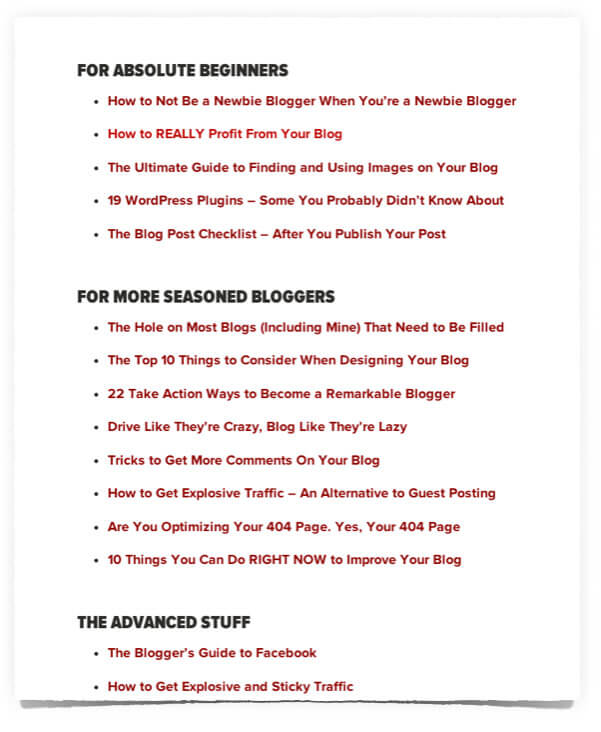
That tells you something else: people want a curated list of helpful resources. Write that down too.
We haven’t even gotten to the 4th result yet and we already know that:
- People want to hear blogging tips from real world bloggers
- People want actionable tips they can use right away
- People want lists of hand-curated resources
You could easily turn what you learned into a killer Wow Content piece. An article titled “50 Bloggers Share Their #1 Most Helpful Blogging Resource” would absolutely crush it.
At this point you should have at least one battle-tested Wow Content idea.
Awesome work!
Now it’s time to turn that idea into a living, breathing piece of awesomeness.
Step #2: Make Your Wow Content a Reality
You know what bugs me?
When so-called SEO “experts” tell you that the secret to higher rankings is to “publish great content”.
I’m not going to lie to you:
Great content is KEY.
But very few of those experts ever tell you how to create great content.
Don’t worry: I won’t leave you hanging.
I’m going to teach you three insanely-practical techniques to make your Wow Content worthy of all those “wows”.
Technique #1: Length is Strength
This may not come as a surprise, but I’ll say it anyway…
Long-form content absolutely CRUSHES short blog posts.
In fact, it’s not even close.
Here’s proof:
OKDork and BuzzSumo recently teamed up to answer the question: what makes content go viral?
After analyzing over 100 million articles (!), they found that longer content generated significantly more social shares than short content.

As you can see in the graph, 3000+ word articles get more social shares on Facebook, Pinterest, Linkedin, Twitter and Google+.
This actually also plays out here at SPI. Here’s the social share/content length breakdown for content published at SPI over the last 6-months.

As you can see, Pat’s long-form content performs head and shoulders above shorter posts.
Longer content also tends to rank better in Google.
SERPIQ analyzed at Google’s first page results for over 20,000 keywords.
What did they find?
That long articles tended to rank higher in Google.

In fact, the average word count of a top 10 result in Google was over 2000 words.
Bottom Line: Make your piece of Wow Content is at least 2000 words. Don’t be afraid to publish something that’s 5000 words plus. The longer the content, the better it tends to do.
Technique #2: Stand Out With Your Content Design
Sure, content length is REALLY important…
…but long content isn’t going to get you anywhere unless you have the design to back it up.
Here’s what I mean:
A few years back Derek Halpern introduced a very interesting research study to the marketing world…
A research study that surprised a lot of veteran marketers.
The study was called, “Trust and mistrust of online health sites”.
In this study researchers asked subjects to look at two websites:
One website was professionally designed. The other looked dated and ugly.
When the researchers asked people why they mistrusted the information on either site, 94% said it was because of design.
And get this: the content on both websites was EXACTLY the same.
What does this have to do with your Wow Content?
The fact is, people make HUNDREDS of micro-impressions about your content before they’ve read a single word.
And those impressions are based 100% on your content’s design. The better it looks, the better impression you’ll leave (and the more people will link to it).
A quick example:
Last year Neil Patel published a jaw-dropping guide called The Advanced Guide to SEO.

Considering Neil’s guide boasts 45,000 words spread across 9-chapters, this guide would have done pretty well with a standard blog post design.
But Neil knew the power of awesome content design. That’s why he had every chapter professionally designed, like this:

Here’s what’s interesting:
When you read the blog comments that people left on QuickSprout, a good chunk of them are people showering praise the guide before they’ve even had a chance to read it.



How could James, Chad, Amir and Ivan get so excited about something they haven’t even read?
The answer: Neil’s guide looks amazing.
Obviously, the meat of Neil’s guide was world-class (as it always is). You’re not putting lipstick on a pig here.
But if you want people to really say “wow”, you NEED to invest in content design. Period.
Here are some simple (and cheap) ways to do just that:
Custom Post-Specific Banners
When someone lands on one of your blog posts what’s the first thing they see?
If you think it’s your navigation bar or first paragraph, you’re wrong.
Eye tracking studies show that people’s eyes naturally gravitate towards images:

(Red=where people look)
That’s why you want to include a custom image at the top of your Wow Content.
This is something that Pat does here at SPI for most of his posts:

It doesn’t take much to set these up.
Just grab a free stock photo, pop it into PowerPoint and add some text. Canva and PicMonkey work too.
If you’re not a graphic design ninja, you can hire someone on Upwork to make them for you (that’s what I do).
This post-specific image set me back a measly 10 bucks:

Looks pretty nice, right?
Section Banners
If you want to take your content design to the next level, consider using “section banners” to break up your content.
What are section banners?
They’re custom banners that you include with each subheader in your article.
For example, I have a post that’s a long list of Google’s (supposed and speculated-on) ranking factors.
I hopped on Elance and hired a designer to create custom banners for each category.
Here’s an example:
 Not a big deal on its own. But when you have 10 of these on a page — plus the post-specific banner at the top — you really stand out from the pack.
Not a big deal on its own. But when you have 10 of these on a page — plus the post-specific banner at the top — you really stand out from the pack.
Boxes and Callouts
Boxes and callouts make a bland blog post look more like a magazine article (which is a good thing).
More importantly, these custom design elements make your content look flat out better than every bland blog post out there.
Greg Ciotti, who runs the excellent Help Scout blog, uses callouts liberally to break up his blog posts.
Like this:

and this:

The rub is that you usually need to hire a developer to set these bells and whistles up for you.
Fortunately, I recently come across a nifty program called Thrive Content Builder. It basically allows you to add callouts and other design elements in blog posts without having to code.
Bottom Line: Invest some time and money into the visual side of your content and reap the benefits.
Technique #3: “An Inch Wide, a Mile Deep”
Finally, you want your content to boast what most of today’s online content lacks:
Depth.
Let me explain:
You see, most content skims the surface of a topic.
For example, you’re no doubt familiar with the dreaded list post, like “25 tips for burning fat” or “12 ways to get more email subscribers”.
The problem with these types of posts is that they briefly touch on a dozen different topics.
The fact is, people want insane levels of DEPTH in their content. Content that holds them by the hand and gives them all the meaty details.
A good rule of thumb is to go “An inch wide, a mile deep” with everything that you publish.
An inch wide because you’re covering one very small part of a larger topic.
A mile deep because you’re hitting every possible angle on that topic.
Example of a post that’s too broad: “5 tips for landing a job in a tough economy”
Example of an IWMD (inch wide, mile deep) post: “The 3-step strategy for making your LinkedIn profile stand out from the pack”.
Here’s a great example of IWMD content from the HubSpot blog.

Noah’s post goes into INSANE detail about his homepage redesign.
This is NOT “5 tips for getting more email subscribers”….
…it’s “How My Blog Homepage Redesign Increased Email Signups by 300%”.
See the difference?
This post gives you INSANE detail about creating a homepage that converts readers into subscribers.
This post covers things like:
- How to write benefit-driven copy and encourages people to sign up.
- Adding social proof
- Removing the navigation bar
This is super in-depth advice that people can put into practice right away.
Another example:
30-days of HIIT is a (free) comprehensive high intensity interval training (HIIT) workout.

And it’s one of the most in-depth pieces of content I’ve EVER seen.
Forget tips like “do 30 seconds on, 30 seconds off”.
This guide gives you the EXACT workouts to do for each of the 30-days.
For example, here’s day 1:

This content leaves very little guesswork. You have everything you need except for a pair of sneakers.
Bottom Line: Make sure your wow content is IWMD through and through.
At this point you should have one piece of Wow Content ready to rock. Now it’s time to do what you came here to do: build some links.
Step #3: Reach Out and Get Your Links
Here’s why most people struggle with link building:
They think that the only way to proactively build links is to blast their site with phony blog comments and spammy profile links.
Fortunately, that’s far from the truth.
When you have a piece of Wow Content, you’ll find that people actually WANT to link to you.
You just have to get those people to see it.
Here’s how.
Strategy #1: Resource Page Link Building
Resource pages are a link building goldmine.
What are resources pages?
They’re pages exist to link out to helpful resources on other sites.
Here’s an example from SPI:
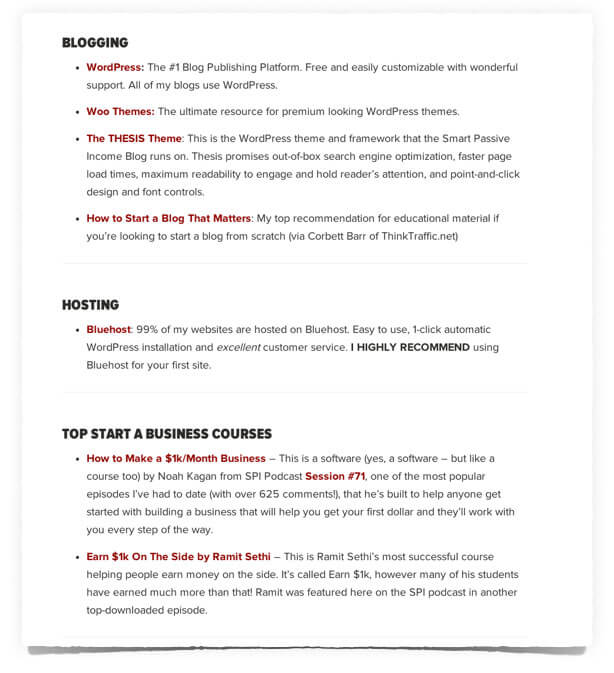
Think about this for a second:
You’ve got a page that links out to helpful resources…
…and you just created a helpful resource.
Can you say match made in heaven?
Here’s exactly how to get backlinks from resource pages:
Step #1: Find Resource Pages In Your Niche
Most resource pages have footprints that you can use to find them at scale.
Here are some search strings to try:
- “keyword” + inurl:resources
- “keyword” + inurl:links
- “keyword” + “helpful resources”
- “keyword” + “useful links”
Going back to our gardening example, here’s a search string that you’d want to use:

In about 5 seconds I found over 150,000 pages that just might want to link to my Wow Content.

Of course, a good chunk of these results won’t make sense for one reason or another (for example, pages that aren’t actually about gardening).
But this number gives you an idea of how many potential resource page links are there for the taking.
Step #2: Evaluate the Page
Click on one of the pages in the results.
Here’s one that I found from my gardening search:

Here are a few questions you want to ask yourself when sizing up a resource page:
- Is this on a legit site? Or does it look shady or abandoned?
- Is this site relevant to my niche?
- Is the site offering up link exchanges (common with resource pages)?
- Does the page have dofollowed links out to other sites?
- Does the site have decent SEO metrics, especially Domain Authority (you can also look at Page Authority)?
- Would a link to your Wow Content add value to that page?
In the case of the page above, it looks great. It’s a super-niche relevant, DA51 site.
And a link to my awesome gardening resource would fit that page like a glove.
Now it’s time for step #3…
Step #3: Ask For Your Link
Once you’ve found a page that seems like a good fit, it’s time to reach out and ask for a link.
Here’s the script that I recommend:
Subject: Your resource page
Hi NAME,
I stumbled on your awesome TOPIC resource page today. Awesome work!
I actually just put the finishing touches on a BRIEF DESCRIPTION OF WOW CONTENT:
URL.
It might make a nice addition to your page. Either way, keep up the great work you’re doing with SITE.
I’ve found that this approach and script convert at 5-10% (depending on the niche).
Trust me: in the world of email outreach link building, 5-10% is AWESOME.
Plus, these are Grade-A white hat backlinks. The type of links that actually make a long-term difference in your site’s rankings.
Strategy #2: Broken Link Building
Want to take resource page link building to the next level?
Then broken link building is one strategy you want to start leveraging today.
What is it?
Instead of begging for links from site owners…
…you find broken links on their site first.
And then beg for your link 🙂
When you point out a broken link to someone — and offer your Wow Content as a replacement — they’re MUCH more likely to add your link.
Let me break it down for you, step-by-step.
Step #1: Find Broken Links
When you find a broken link on a page you want to get a link from, you’re good as gold.
The only problem is:
Finding broken links can be a HUGE pain.
I’m not going to lie to you: this step in the process does take some work. But the conversion rate you’ll get from BLB vs. straight up link begging is worth the trouble.
Here’s how to find them:
Resource Pages + Check My Links
Remember all those resource pages you found earlier?
Well before you reach out and ask for a link, check to see if there are any broken links on that page.
For example, here’s a PR4 page resource page I found using the search string “gardening” + inurl:links.

I could simply ask for a link on that page…and that would convert pretty well.
But I can easily double or triple my conversion rate by pointing out a broken link or two.
The easiest way to find broken links on a page is to run the free Check My Links extension for Chrome.
As you can see, when I ran Check My Links on that page, it found a broken link:

When I click on that link, sure enough, it’s a 404 page pointing to a page that used to have information about the US Botanical Garden in Washington DC:

Rinse and repeat with all of the resource pages that you come across.
OSE Top Pages
Another awesome way to find broken links is with a little-known feature of Open Site Explorer.
First, grab the homepage URL of a site you’d like to get a link from and pop it into OSE:

Next, click on the “Top Pages” tab. This will sort the pages on that site by Page Authority.

Finally, choose “4xx” from the dropdown menu “Show pages with status…”

This will give you a list of authoritative pages on that site that are broken.
For example, Inc.com has a PA72 404 page that used to contain links to their marketing guides:

So what do you DO with this link?
You find all of the pages that link to this page.
You can use Majestic SEO, Open Site Explorer or Ahrefs for this step.
I prefer Ahrefs.
Just enter the 404 page’s URL into the tool…
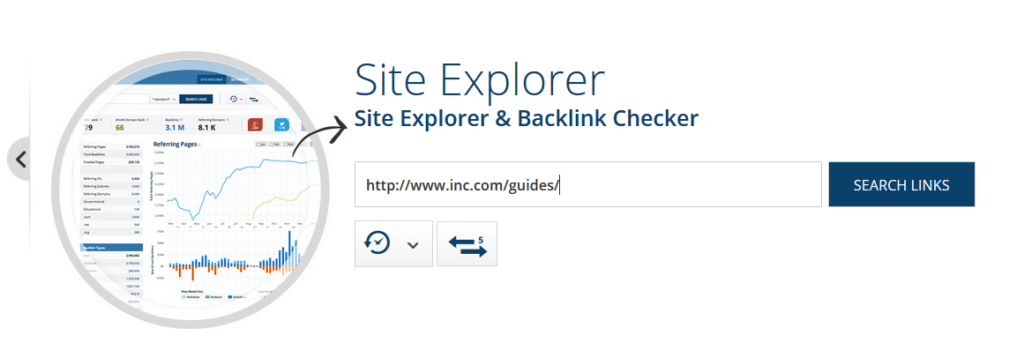
…and you’ll get a list of pages that link to the broken link you just found.

Now it’s time to get your links.
Step #2: Reach Out and Get Your Links
Finally, email the person that runs the page with the broken link with this script:
Subject: Broken link at SITE
Hi NAME,
I stumbled on your awesome TOPIC resource page today. Awesome work!
Just wanted to let you know that I found a few dead links:
URL #1
URL #2
Also, I actually just put the finishing touches on a BRIEF DESCRIPTION OF WOW CONTENT:
URL.
It might make a nice addition to your page. Either way, keep up the great work you’re doing with SITE.
As you can see, it’s very similar to the resource page link building script. The only difference is that you add a touch of value before your pitch.
Strategy #3: Reverse Engineering
Next, it’s time to tap into an old school link building strategy that never goes out of style: reverse engineering.
Here’s the 3-step process:
Step #1: Identify an Authoritative Page
First, you need to find the right page to reverse engineer.
The “right” page is a relevant page in your industry with lots of white hat links.
Here are a few places to find them:
Google’s Top 20
Just search for keywords that you’d like to rank for and see what shows up. Generally, pages that rank for competitive keywords have some link authority behind them.
BuzzSumo
BuzzSumo shows you content that’s generated a lot of social shares. Generally, content that’s racked up a lot of social shares has also acquired some backlinks to boot.
Open Site Explorer’s “Top Pages”
This is the tab in OSE that I mentioned earlier. Instead of looking for 404 pages, you’re simply looking for pages that have a lot of links pointing to them.
Content You Used to Inspire Your Wow Content
You already did the hard work of finding popular content in your industry. And you made something even better. Sites linking to the content you found in Step #1 from this post make PERFECT link opportunities.
Step #2: Find Their (Quality) Links
Next, it’s time to find the links pointing to the pages that you found.
First, pop the URL into your link analysis tool of choice.
Then identify any of their links that you may also be able to get your hands on (for example, an editorial link on a resource page).
Word of Warning: You want to be super careful that you reverse engineer the right links. Keep in mind that just because a site is ranking above you today, doesn’t mean they’ll be there tomorrow. Use the criteria I outlined under the “First, What Still Works From The Original “THE Backlinking Strategy That Works”?” section of this post to make sure you’re only reverse engineering white hat backlinks.
Step #3: Grab As Many Quality Links as You Can
Now it’s time to grab the links that your competitors have. Your approach will depend on the type of link.
For example, if it’s from a guest post, you’ll need to also write a guest post. If it’s a resource page link, you’ll need a piece of Wow Content that would make sense for that page.
For example, let’s say you wanted to reverse engineer the Wow Content I mentioned earlier: 100+ Ways to Conserve Water.
In about 15 seconds I found a niche-relevant resource page about water conservation linking to that page:

Sure enough, that page has several broken links…making it a prime broken link building opportunity.

Repeat the process until you run out of potential link opportunities.
Strategy #4: Infographics (With a Twist)
Infographic marketing — when done right — is easily one of the most scalable white hat link building strategies on the planet…
…Especially when you add the twist I’m about to share with you.
Now I could write an entire post about how to create and design an infographic (in fact, I did).
But here’s the thing:
Creating a winning infographic isn’t very different than any other piece of Wow Content. The difference is how you promote it.
And now I’m going to show you how to turn an infographic into high-quality links using the 5-step Guestographic Method.
Step #1: Publish an Awesome “Wow Content” Infographic on Your Site
This step is pretty straightforward: just follow steps #1 and #2 from this post. The only difference is that your Wow Content will be an infographic instead of a blog post or article.
Step #2: Find People That Want to See Your Infographic
Don’t overthink this:
Once you have your infographic in hand, it’s time to show it to people that would want to check it out.
Who are those people, exactly?
Bloggers that write about your infographic’s topic.
For example, let’s say you just published an infographic about the paleo diet.
Head over to Google and start typing “paleo diet” into the search field. Grab the top 20 results for the keyword “paleo diet”…and anything else Google Suggest throws at you:

Step #3: Send Your Infographic
Now it’s time to reach out and pitch your infographic to the people you just found.
You’re not asking for anything at this point. You just want to gauge their interest.
Here’s the word-for-word script to send them. I’m going to use an infographic about paleo desserts as an example.
Subject: Paleo desserts
Hey Pat,
I was looking for some paleo recipes this morning when I came across your excellent post about paleo side dishes.
I actually just put together an infographic about paleo desserts last week.
As someone that’s interested in paleo recipes, I thought you might get a kick out of it. Let me know if you want me to send it over.
Step #4: Send Your Infographic (with a bribe)
When they get back to you saying “sure, send it over”, it’s time to send them this script:
Cool. Here’s the infographic:
URL
Also, let me know if you ever want to publish this infographic on your site. I’ll be happy to write a unique introduction just for you.
Why the unique intro?
Well when someone wants to publish an infographic on their site, there’s a HUGE barrier that prevents them from pulling the trigger:
The fact that they have to write a unique introduction to go along with the infographic.
After all, they can’t simply copy and paste your infographic into WordPress and call it a day.
But when you offer to write that unique introduction for them, you remove that barrier and make their life easier.
Step #5: Write The Intro and Get Some Awesome Links
Finally, it’s time to write a high-quality 200-300 word introduction to accompany the infographic.
Make sure to add a link to your infographic in the intro.
Here’s an example of a Guestographic backlink that I built a while back:

As you can see, contextual links like that are the type of squeaky clean editorial backlinks that Google likes to see today.
 Brian Dean
Brian Dean
 John Corcoran
John Corcoran